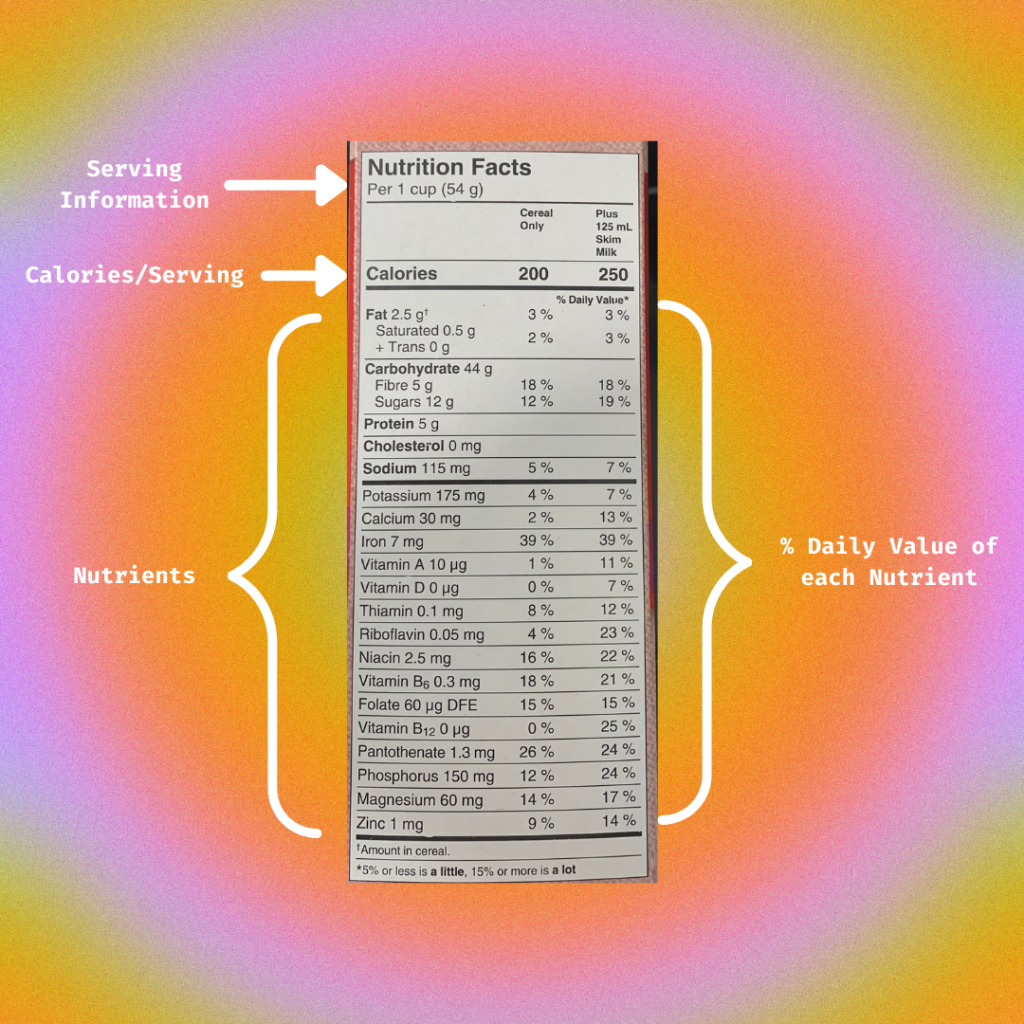Navigating Nutrition Facts Labels

Introduction
**Disclaimer: the intention of this blog post is to provide a brief overview of what is on a nutrition facts label and what it all means. The intention of this blog post is NOT to cause anxiety around feeling the need to look at and read nutrition facts labels but to do the exact opposite. If you feel the need to look at nutrition facts labels before allowing your body to consume food – proceed with caution.
In last week’s post, we touched a little bit on nutrition facts labels amongst the noise of diet culture. Diet culture may force you into thinking you have to count calories and look at nutrition labels before allowing your body to eat certain foods. When in reality you do not need a calorie app to track how much you “should” eat. With intuitive eating, your body will become in tune with your hunger to honor it.
This post is meant to be a helpful guide for navigating nutrition facts labels and understanding what it all means in an easily digestible format.
The following nutrition facts label is from a box of cereal:
Serving Information
Starting at the top of the nutrition facts label we have the serving information. For this specific cereal, it is 1 cup. I don’t know about you, but personally, for me, 1 cup of cereal for a snack or breakfast meal is not going to cut it. I am also not measuring out a cup of cereal each time I go to eat it because I pour what my little heart desires into a bowl. Majority of the time the serving information is unrealistic and too small for an adult serving let alone a child-sized portion. You should not let the serving information control how much you choose to eat of a food.
Calories/Serving
Calories are a unit of energy that are needed in the body. Plain and simple. A lot of the time when checking out a food item individuals head straight to the calorie section to decide if they will allow themselves to eat that food or not. This is due to diet culture’s influence on the perception of calories. Diet culture tries to make individuals believe that they should be eating the lowest amount of calories possible and choosing the lower-calorie option more frequently when this is just not true. Your body NEEDS energy for everyday movement and function therefore your body NEEDS calories and they are nothing to be afraid of.
Nutrients
This section of the nutrition facts label is more important than the rest as it provides nutrient amounts for various vitamins and minerals which if you have a deficiency in a certain vitamin/mineral it could be very helpful to see which foods are high in that nutrient/vitamin. For example, iron can be a very common mineral to be deficient in. When looking at this nutrition facts label, I see that this cereal is a pretty good source of iron therefore I might be influenced to buy it. Also, in this section, you will find fat and carbohydrate amounts which from the influence of diet culture you may be inclined to go straight to when deciding to buy a food or not. As diet culture has made fat and carbs look like the enemy when they are also equally important for the body. You can also see how much sugar per serving there is which regardless of its source sugar is used in the body the same as if it is from cereal or fruit.
% Daily Value of Each Nutrient
This part of the nutrition facts label in my opinion is so pointless. The majority of the % daily values are based on a 2000-calorie diet which is about the minimum amount of calories an adult should be consuming in a day. Therefore, it makes the nutrition facts pretty pointless if it is less than what you should be eating in a day.
My Advice
It is not necessary to look at nutrition facts labels. Sometimes for certain medical conditions/concerns such as diabetes, vitamin/nutrient deficiencies, or if you are on a low-sodium diet/renal diet it may be important to have a closer peek at what you are consuming. But in general, the nutrition facts labels are not very accurate to what a normal person would consume per serving and are based on calories per day.
If you or someone you know struggles with allowing themselves to eat a food depending on the label/calorie breakdown, try:
- Covering up the labels of foods in your home
- Putting foods in a reusable container to avoid labels
- Having someone read the menu options to you to avoid choosing a food based on calories

If you find yourself feeling the need to track everything you eat and constantly be analyzing nutrition facts labels it may be beneficial to speak with a dietitian and discover how intuitive eating can help you internally regulate how much nutrients your body needs which is unique to you.
Have a Question?


Do you have any questions or suggestions? Feel free to contact us! Just leave your email here, and we will get back to you shortly.